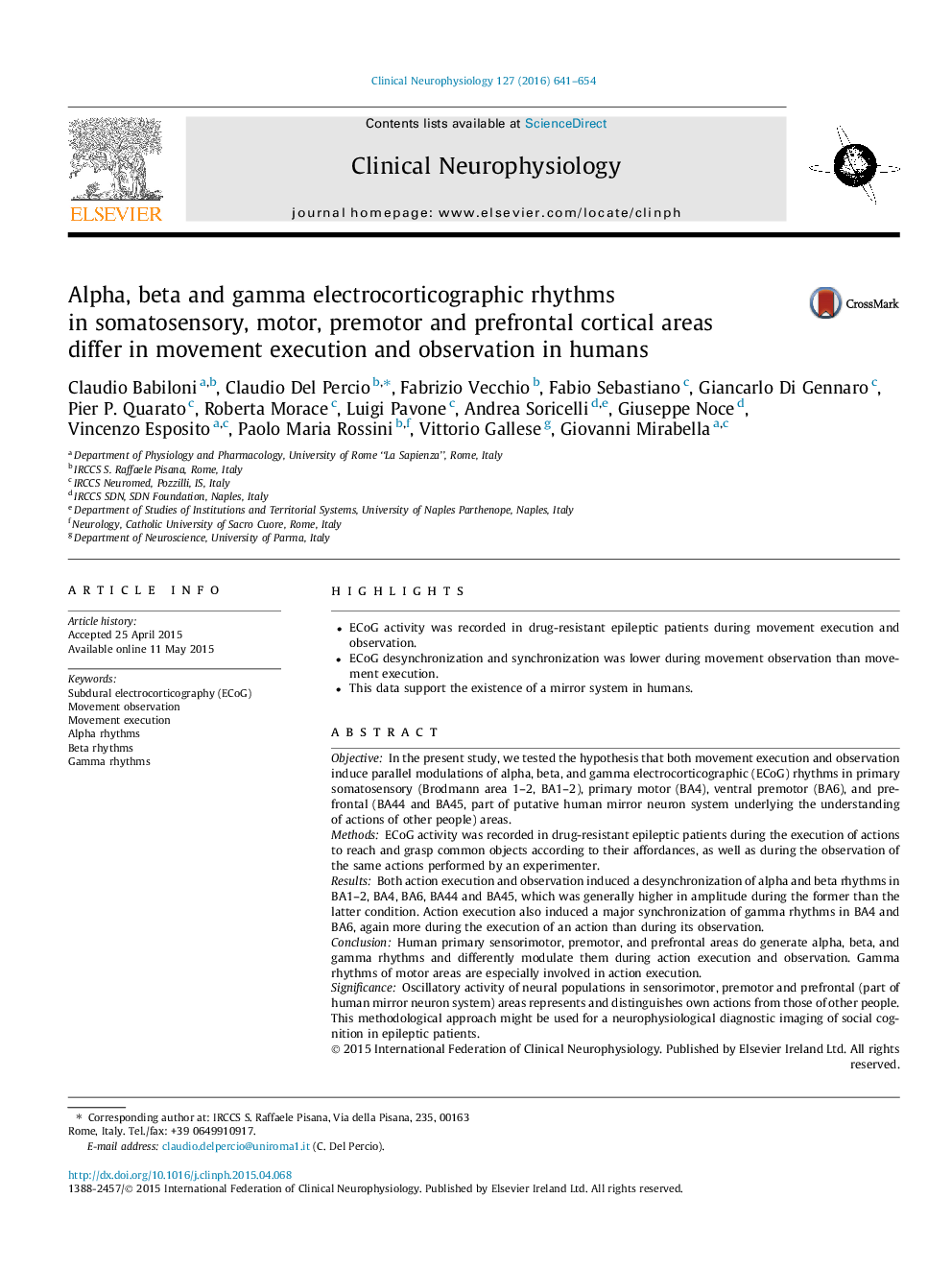| Article ID | Journal | Published Year | Pages | File Type |
|---|---|---|---|---|
| 6007954 | Clinical Neurophysiology | 2016 | 14 Pages |
â¢ECoG activity was recorded in drug-resistant epileptic patients during movement execution and observation.â¢ECoG desynchronization and synchronization was lower during movement observation than movement execution.â¢This data support the existence of a mirror system in humans.
ObjectiveIn the present study, we tested the hypothesis that both movement execution and observation induce parallel modulations of alpha, beta, and gamma electrocorticographic (ECoG) rhythms in primary somatosensory (Brodmann area 1-2, BA1-2), primary motor (BA4), ventral premotor (BA6), and prefrontal (BA44 and BA45, part of putative human mirror neuron system underlying the understanding of actions of other people) areas.MethodsECoG activity was recorded in drug-resistant epileptic patients during the execution of actions to reach and grasp common objects according to their affordances, as well as during the observation of the same actions performed by an experimenter.ResultsBoth action execution and observation induced a desynchronization of alpha and beta rhythms in BA1-2, BA4, BA6, BA44 and BA45, which was generally higher in amplitude during the former than the latter condition. Action execution also induced a major synchronization of gamma rhythms in BA4 and BA6, again more during the execution of an action than during its observation.ConclusionHuman primary sensorimotor, premotor, and prefrontal areas do generate alpha, beta, and gamma rhythms and differently modulate them during action execution and observation. Gamma rhythms of motor areas are especially involved in action execution.SignificanceOscillatory activity of neural populations in sensorimotor, premotor and prefrontal (part of human mirror neuron system) areas represents and distinguishes own actions from those of other people. This methodological approach might be used for a neurophysiological diagnostic imaging of social cognition in epileptic patients.
